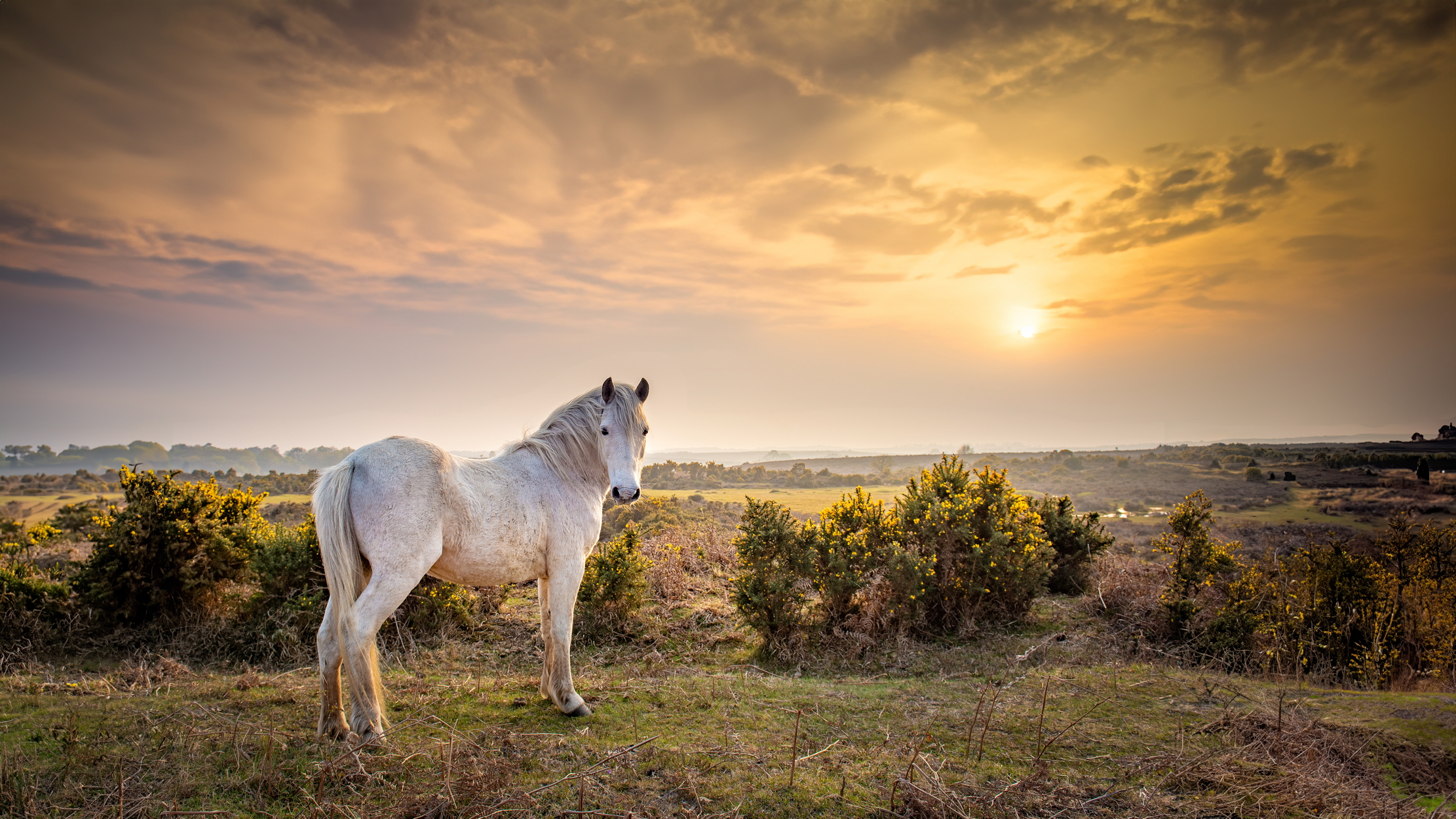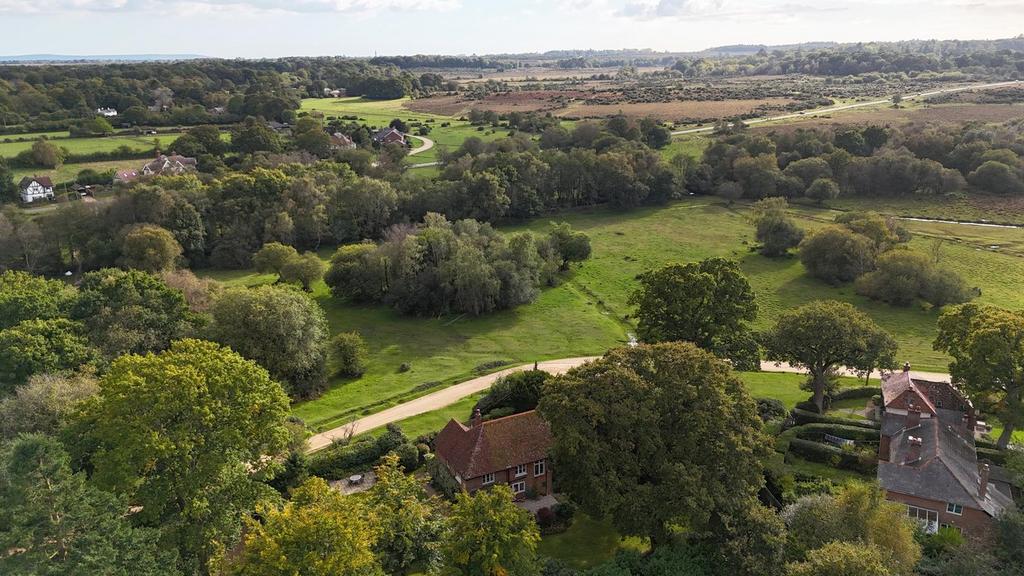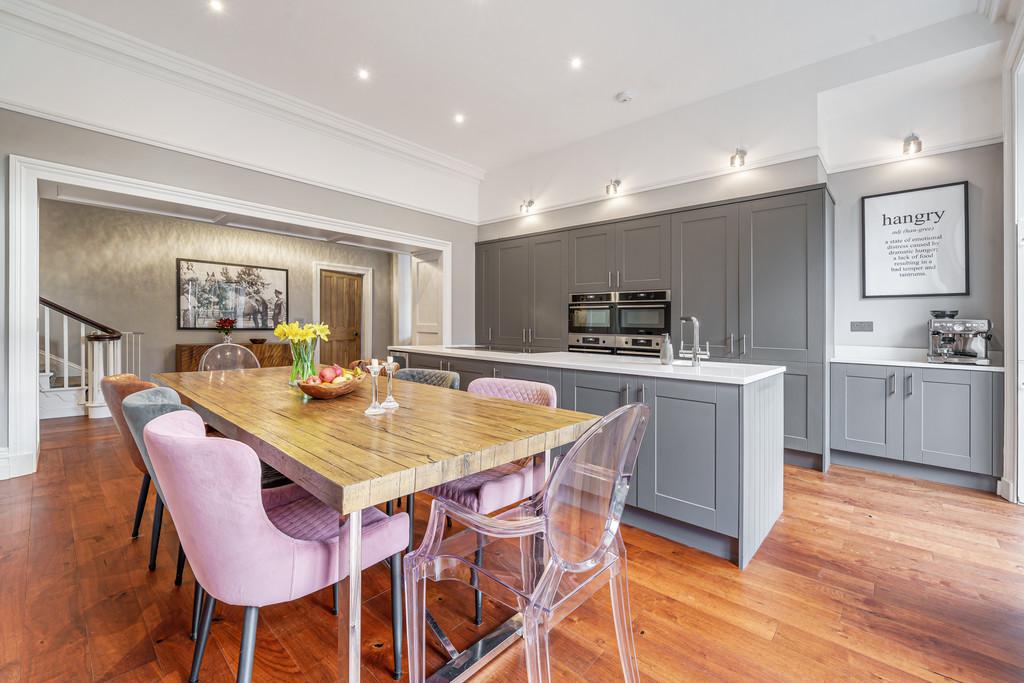The 25% premium for the pleasure of living in one of the UK’s national parks
Homes located in national parks are typically £66,700 more expensive than similar properties elsewhere, according to Nationwide. Still tempted? Here’s one or two plum homes for sale in these beauty spots.


With their rugged landscapes and slower pace of life, you’d be hard-pressed to find a Country Life reader who doesn’t enjoy a national park.
Still, if you want to fully immerse yourself in the joys of this beautiful countryside, it’ll cost you. An average 25% extra to be precise.
According to Nationwide, homes located within a national park command an average £66,700 (25%) premium over a similar property elsewhere. That’s based on an average UK house price of £266,640.
The premium drops to 7% for property within 5km of a national park. And it stands at 15% for homes in an Area of Outstanding Natural Beauty (AONB).
Andrew Harvey, Nationwide's Senior Economist, points out that people living in national parks are ‘ideally placed to make the most of the great outdoors and take advantage of a range of activities and amenities. Development is also controlled with limited new housing construction, which also helps to explain why house prices tend to be relatively high’.
So let’s drill down into the details. Most expensive national park? That’ll be the New Forest, with an average house price of £576,000. Picturesque villages include Ashurst, Lyndhurst and Brockenhurst.

Why not try this five-bedroom detached Victorian family home for size? It is a hop, skip and a jump from Brockenhurst High Street, where you’ll find the train station, eateries and boutique shops, says the selling agent Spencers. It has a £1,950,000 price tag.
Sign up for the Country Life Newsletter
Exquisite houses, the beauty of Nature, and how to get the most from your life, straight to your inbox.
What about the national park with the largest resident population? South Downs, also in southern England, which has a 115,100-strong population - and a £400,000 average house price. Think Petersfield, Liss, Midhurst and Petworth for sought-after towns.
Jennie Hancock, founder and director of West Sussex agency Property Acquisitions, says that buyers head for the South Downs in search of ‘a time portal to a bygone age'.
She explains: ‘Living in the historical villages in the golden triangle between Chichester, Midhurst and Petworth, is like stepping back in time with local dog shows and gardening societies, fetes and village shops selling home-made cakes’. Quintessentially English, then!
Meanwhile the title of the UK’s most visited national park goes to the Lake District. With tourism big business here, perhaps this could be a good spot for those thinking of renting out their property to holiday makers.

Grove House in Windermere, the Lake District, is an ideal family home or holiday let, according to the selling agent, Hackney & Leigh. It's on the market for £1,000,000.
But let’s not forget the AONB. Surrey Hills has been crowned the most expensive, at £610,000. (Remember the idyllic cottage in the film, The Holiday? Yep, that’s rumoured to be in the Surrey Hills.) It’s followed by the Chilterns (£570,000), North Wessex Downs (£415,000) and the Cotswolds (£401,000).
Look north for the most affordable towns
If it’s affordability you’re interested in — and you’re happy to jettison countryside living — head to Cumnock near the coast in Ayrshire, Scotland.
Zoopla has named it the most affordable town in Britain, with an average house price of £80,300. That’s quite a bit lower than the £267,500 UK average. In fact, four out of five of Britain’s most affordable towns are located in Ayrshire: Cumnock, Girvan, Saltcoats and Ardrossan. Homes here are valued at less than 1.3 times the annual household income.
In England, Shildon and Peterlee, both in county Durham, and Ashington in Northumberland are the most affordable towns for buyers. Homes in these areas are valued at less than 1.4 times local household incomes.
In contrast, the average property in Britain is 3.8 times the average annual household income, according to the property portal.
‘Affordability will be the single biggest factor shaping house price growth in the UK over the next few years,’ says Tom Bill, head of UK residential research at Knight Frank.
‘Within the capital and around the country, demand is rising on the edge of traditionally popular locations as mortgage costs increase versus recent years and people establish their new work/life balance after the pandemic.’
Annabel Dixon is an award-winning property journalist with a decade of experience whose writing has appeared in The Times, Sunday Times and the Daily Telegraph

Credit: Getty
The Stamp Duty surprise, inheritance tax on farms and more: A breakdown of the Autumn Budget
Chancellor Rachel Reeves may have decided against a Capital Gains Tax increase on homes — but she lined up a
-
 The King's favourite tea, conclave and spring flowers: Country Life Quiz of the Day, April 22, 2025
The King's favourite tea, conclave and spring flowers: Country Life Quiz of the Day, April 22, 2025Tuesday's Quiz of the Day blows smoke, tells the time and more.
By Toby Keel Published
-
 London is the place for me* (*the discerning property buyer)
London is the place for me* (*the discerning property buyer)With more buyers looking at London than anywhere else, is the 'race for space' finally over?
By Annabel Dixon Last updated
-
 London is the place for me* (*the discerning property buyer)
London is the place for me* (*the discerning property buyer)With more buyers looking at London than anywhere else, is the 'race for space' finally over?
By Annabel Dixon Last updated
-
 What's a 'wellness village' and will it tempt you back into the office?
What's a 'wellness village' and will it tempt you back into the office?The team behind London's first mixed-use ‘wellness village’ says it has the magic formula for tempting workers back into offices.
By Annunciata Elwes Published
-
 A mini estate in Kent that's so lovely it once featured in Simon Schama's 'History of Britain'
A mini estate in Kent that's so lovely it once featured in Simon Schama's 'History of Britain'The Paper Mill estate is a picture-postcard in the Garden of England.
By Penny Churchill Published
-
 Hidden excellence in a £7.5 million north London home
Hidden excellence in a £7.5 million north London homeBehind the traditional façades of Provost Road, you will find something very special.
By James Fisher Published
-
 Sip tea and laugh at your neighbours in this seaside Norfolk home with a watchtower
Sip tea and laugh at your neighbours in this seaside Norfolk home with a watchtowerOn Cliff Hill in Gorleston, one home is taller than all the others. It could be yours.
By James Fisher Published
-
 A Grecian masterpiece that might be one of the nation's finest homes comes up for sale in Kent
A Grecian masterpiece that might be one of the nation's finest homes comes up for sale in KentGrade I-listed Holwood House sits in 40 acres of private parkland just 15 miles from central London. It is spectacular.
By Penny Churchill Published
-
 Some of the finest landscapes in the North of England with a 12-bedroom home attached
Some of the finest landscapes in the North of England with a 12-bedroom home attachedUpper House in Derbyshire shows why the Kinder landscape was worth fighting for.
By James Fisher Published
-
 Could Gruber's Antiques from Paddington 2 be your new Notting Hill home?
Could Gruber's Antiques from Paddington 2 be your new Notting Hill home?It was the home of Mr Gruber and his antiques in the film, but in the real world, Alice's Antiques could be yours.
By James Fisher Published
